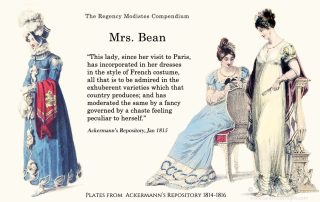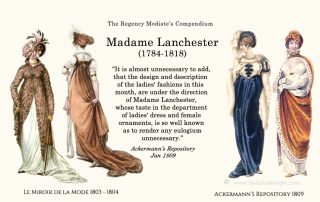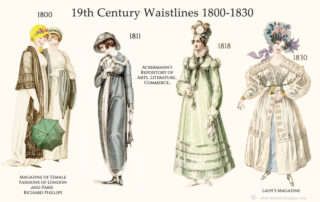Mrs. Bean
A humble milliner in 1806, Mrs. Bean rose to giddy heights in just a decade, building a clientele of blue-bloods. In 1816, working with another leading modiste, Mrs. Triaud, she created twenty-six dresses and pelisses for Princess Charlotte's wedding trousseau, some of which still survive today in museums. Mrs. Charlotte Bean nee Kennedy (ca.1785-1868) approx. 1806-08: Bean's Millinary Rooms 42 Oxford St. approx. 1809-18: Mrs Bean's Magazin des Modes 32 Albemarle St. Born Charlotte Kennedy, the daughter of haberdasher John Kennedy, Mrs. Bean was married very young to her husband Thomas in 1803, and almost [...]
Madame Lanchester
By the time Regency modiste, Madame Lanchester was jailed for bankruptcy in Marshalsea Prison on February 8, 1812, she had spent more than a decade as one of London's best known milliner/dressmakers. Unfortunately, her flair and big ideas were not matched by her head for business. Margaret Ann Lanchester (1784-1818) 1800-02: 37 Sackville St. 1803-05: 17 New Bond St. 1806-10: 59 St. James St. Margaret Ann Lanchester had big ideas, talent, and a love of fine clothes. Inspired by Heideloff's Gallery of Fashion, to which her mother had subscribed in 1798-99, she set up shop [...]
Regency Waistlines Part One
Empire waists and white muslin dresses are synonymous with the Regency era. The look defined early 19th century English fashion for over 20 years. This post is the first of three about changing waistlines during the era. Part Two covers the formal Regency period from 1811-1820 and Part Three the decade from 1820-1830, when the Prince Regent reigned as King George IV. Regency Waistlines Part One As the 19th century dawned, English fashion was more or less in lockstep with Paris. Decades of so-called anglomanie in France had been sparked by Voltaire's [...]



